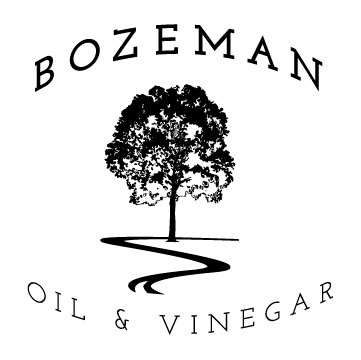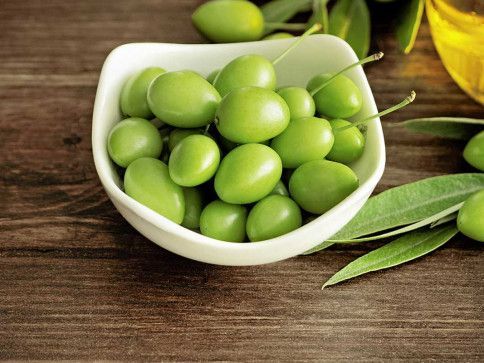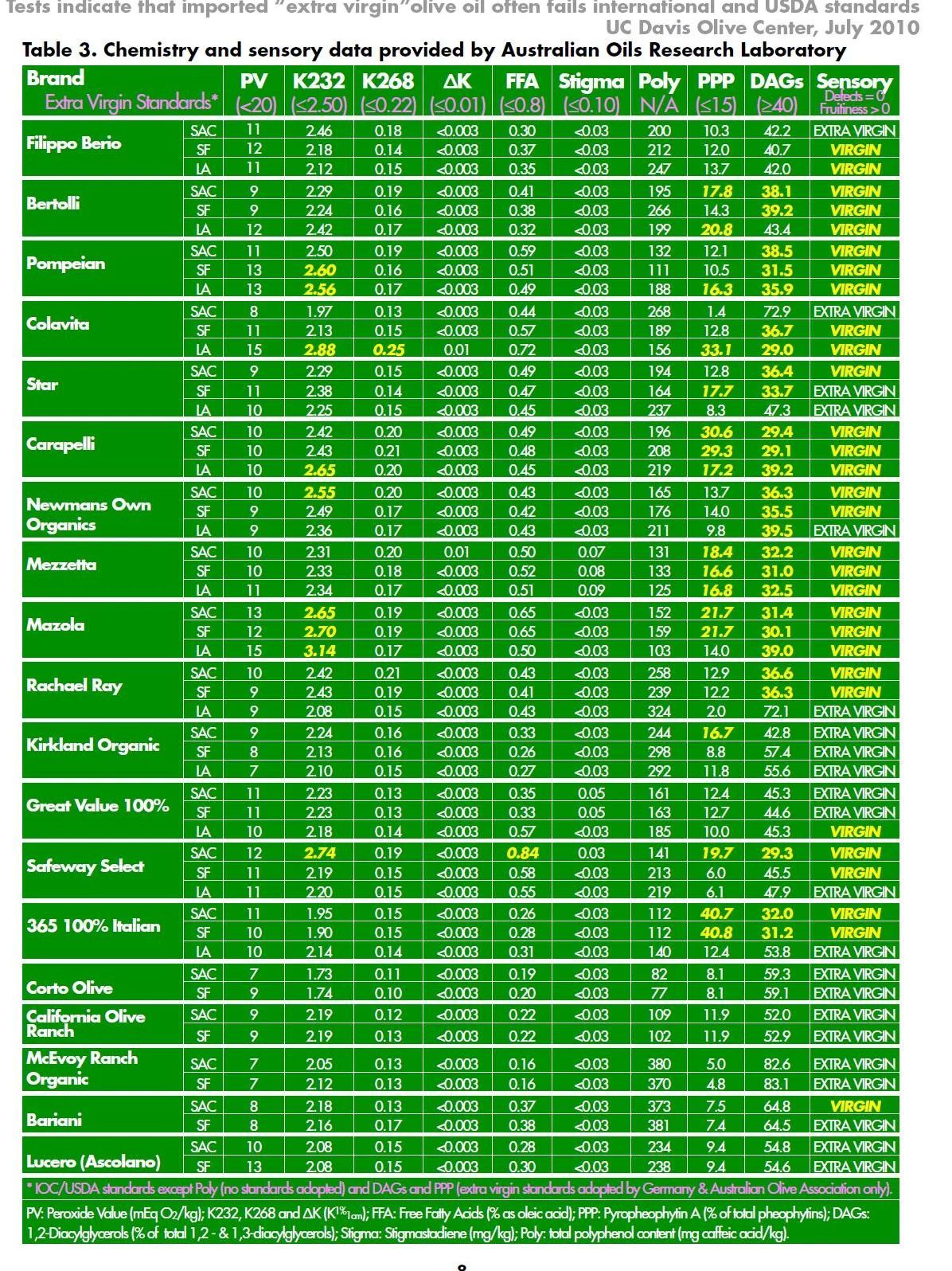The Science Behind...
If you've taken a look at our Extra Virgin Olive Oils, you may have noticed what all those numbers are about. Polyphenols? FFA? DAGs? What do they mean, and why should I care? Well first let's do a quick explanation of what they are, what they mean, and how they affect your body!
It is IMPORTANT remember that all oils contain all of these molecules, no matter how perfect the batch is. We can never get a perfect oil, and we can never completely eradicate the less desirable attributes, we can only do our best to provide oils which have an extremely limited amount. Should you have questions, want more information, or additional resources, please feel free to contact us at anytime.
The Good Stuff:
Polyphenols
This is a classification, or group of molecules which are natural antioxidants. The number we provide is the "total polyphenol content" and it's measurement is milligram per kilogram of oil. Now it's important to remember that polyphenols do not indicate the quality or authenticity of the oil itself, but it simply allows us to know whats in it. Ok, so now how does it affect our bodies? Well, many years of research have shown that polyphenols help prevent degenerative diseases, such as cardiovascular disease and cancers. Dr. Mary Flynn's book "The Pink Ribbon Diet" goes into this, and shows her personal results, should you like a copy we do have them in stock in our gifts section.
Oleic Acid
the word comes from the Latin ole (um) oil + ic. So pertaining to, either the olive, or oil. It is a monounsaturated omega 9 fatty acid which is naturally occurring in olives. The number provided on our oils is a percentage of the oleic acid found in the fats of the olive oil. While the science isn't quite as settled on oleic Acid as it is polyphenols, some studies have shown it can help with cancer, autoimmune diseases, and inflammatory diseases. And it has been proven to help with the healing of wounds and the regeneration of skin. Other studies have shown that oleic acid has helped with the elimination of bacteria and fungi in the human body. Oleic acid also acts as a natural preservative to olive oil, the higher the percentage, generally the more stable, and long lasting it is.
DAGs (Diacyglycerol Content)
This is a test which measures the Diacylglycerol Content. The simplified version is, the higher the number, the fresher and higher quality olives were used. When the DAGs score is low, this indicates that the oil was affected by one of the following; adulterated with refined oils, poor quality, oxidized, or hydrolyzed. This test is extremely useful in showing how the olive was treated, how it was handled during the extraction of oil, and ultimately what level of quality the oil is in.
The Bad Stuff
FFA (Free Fatty Acids)
Free Fatty Acids are measured in percentage, just like Oleic Acid. It is the percentage of fatty acids that have begun to break down and have become free fatty acids. The percentage is a useful indicator of the quality of olive, and how much or how little it was abused before they were crushed for oil. Generally a quality olive will have very low free fatty acids, because the good fats are complete, and stable inside the olive. When it is crushed or pressed with little abuse, those fatty acids remain intact, and continue to provide health benefits. When an olive is allowed to over ripen, sit for extended periods of time, or even decay, just like the rest of the olive, the fats begin to break down, stripping them of their nutrients. When it comes to your body, and how these free fatty acids affect you, multiple studies have shown a correlation between free fatty acids and obesity as well as insulin resistance. The standard is less than .8% to be considered Extra Virgin Olive Oil.
PV (Peroxide Value)
This is the amount of oxidation that has occurred in the oil which can produce undesirable flavors, or odors. Oxidation occurs when an oil is exposed to oxygen, obviously it is impossible to press olives without oxygen being present, but it is possible to limit the amount of time they are exposed for. When a batch of olives is pressed in a relatively short period of time, with a cool atmospheric temperature, and without overexposure to light, the oil is able to maintain a low oxidation. When the olives are pressed in a hot environment, with lots of light, for extended periods of time in effort to squeeze every last drop out, the entire batch oxidizes at a more rapid pace, and to a high degree of oxidation. This directly affects the quality of oil in both nutrition and quality. The standard is less than 20 which is measured in mEq O2/kg (milliequivalents of oxygen per kilogram).
PPP (Pyropheophytins)
This is a test which measures the degradation of the olive oil by measuring the breakdown of chlorophyll, to pheophytins, and then to pyropheophytins. The breakdown indicates the level of oxidation and/or the adulteration with refined oils. This test is a great way to see to what extend an oil was allowed to oxidize, which is an indicator of quality. This is measured in percentage, which shows what percent of chlorophyll has broken down into pyropheophytins. The standard is less than 15% to be an Extra Virgin Olive Oil.




